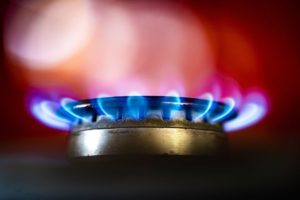Democrat Governor Kathy Hochul has decreed a ban on natural gas in the Empire State. Angering great chefs in the Big Apple and threatening New York residents statewide with financial ruin, the governor laid out a stair-step plan to phase out the cleanest burning fossil fuel, beginning in 2025 and running through 2028. It’s an ambitious plan to be completely electric in less than a decade – especially in a state that burns natural gas to produce about 40% of its electricity. About 60% of New York households have the fuel piped in for cooking, heating, and hot water. Could this move prompt even more residents to escape from New York?
 Hochul announced her plan during the State of the State address. She attempted to assure residents that it would be nearly a free transition, but it looks more likely to be a pricy publicity stunt. “We’re calling it ‘The EmPower Plus’ program,’” she boasted, “and it will help low-income families retrofit their homes by adding insulation, upgrading appliances, and switching from fossil fuels to clean electric heating systems.” What she did not say is that retrofitting a home for electricity will cost the middle class about $27,800 a pop.
Hochul announced her plan during the State of the State address. She attempted to assure residents that it would be nearly a free transition, but it looks more likely to be a pricy publicity stunt. “We’re calling it ‘The EmPower Plus’ program,’” she boasted, “and it will help low-income families retrofit their homes by adding insulation, upgrading appliances, and switching from fossil fuels to clean electric heating systems.” What she did not say is that retrofitting a home for electricity will cost the middle class about $27,800 a pop.
But Natural Gas Is Good
Natural gas is arguably the cleanest burning of any fossil fuel, producing the least carbon dioxide. Moreover, it’s affordable, generally speaking, and consumers prefer gas to heat over electricity for many reasons. For one, when the power goes out, those with gas still have heat, hot water, and a way to cook.
The Consumer Energy Alliance (CEA) calls phasing out natural gas a “dangerous trend” countrywide. “Banning natural gas service will increase inequality, risk electricity reliability,” the CEA report continued, “the cost to replace just major gas appliances in homes nationwide would be more than $250 billion.”
As an aside, 40% of Americans use natural gas stoves. Even the Environmental Protection Agency (EPA) has reported a dramatic decrease in emissions, according to a recent report: “Based on data from the EPA, from 1990 to 2019, New York’s emissions of key pollutants have decreased across the board, with a 78% reduction in nitrogen oxides (NOx), 97.2% reduction in sulfur dioxide (SO2) Even more remarkable – carbon emissions (CO2 ) since 1990 dropped over 24% in conjunction with increased natural gas use, pipeline infrastructure expansion, and an improved grid, and New York’s economy surged.”

(Photo by Frank Rumpenhorst/picture alliance via Getty Images)
Perhaps New York and other Democrat-controlled states will resort to wind and solar – excellent optics, until the windmills freeze, or the sun isn’t strong enough. Taking a different route entirely, the state of Ohio just passed legislation to enhance natural gas production. Governor Mike DeWine signed HB 507, which now defines natural gas as a source of “green energy.” Rep. Troy Balderson (R-OH) penned an opinion piece lauding the state lawmakers. “The recent decision by the Ohio legislature to recognize natural gas for what it truly is — a clean and green energy source — is a milestone worthy of celebration,” he said. “It’s green. It’s clean. And it’s abundant right under our feet.”
Roadblocks to Energy Decision Freedom
Unfortunately, what people may want is not always what they get out of their elected leaders. Governor Hochul has an ally in Consumer Product Safety Commissioner Richard Trumka, Jr. As he said earlier this week, he and the whole of his agency will do whatever it takes to remove pollutants from the air. In speaking with Bloomberg, he described these “hidden hazards” and warned: “Any option is on the table. Products that can’t be made safe can be banned.” Trumka and Hochul may find themselves banned by some of the best chefs in the world for that attitude.
Do you have an opinion about this article? We’d love to hear it! If you send your comments to [email protected], we might even publish your edited remarks in our new feature, LN Readers Speak Out. Remember to include the URL of the article along with your name, city, and state.
Please respect our republishing guidelines. Republication permission does not equal site endorsement. Click here.

